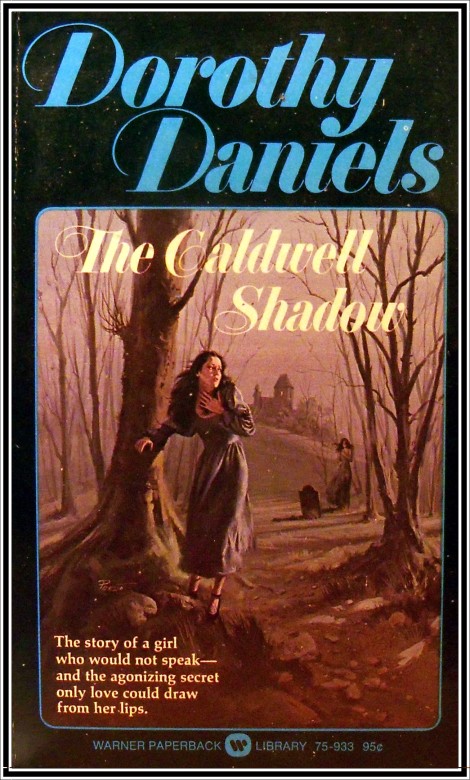‘That house isn’t healthy for the likes of you. You better get out before it’s too late’
As soon as Ellen March saw the house she wanted to buy it. It was her dream home. Even the rumours that it was haunted didn’t discourage her.
The dream home was to be the setting for a whole new happiness… until the dream turned into a nightmare.
The shadow of a woman in the bedroom… the weird white cat… the vicious gossip… was it her imagination, some hideous joke?
Or had the old witch returned from the dead to take possession of the house and of Ellen herself?
 Copyright Barbara Michaels 1973.
Copyright Barbara Michaels 1973.
First British edition published 1975 by Souvenir Press Ltd. This edition published 1977 by Pan Books Ltd.
Since the death of her sister nearly ten years ago, Ellen and her daughter Penny have been living with Ellen’s widowed brother-in-law Jack and his son Phil. But teenager Penny is now flying the nest and Jack is starting a new job somewhere far, far away so Ellen needs to find a home of her own too.
Enter real estate agent Rose, who tells Ellen of a property new to the market – a cottage built in 1720, set in thirty acres of woodland right on the edge of the Blue Ridge mountains, currently owned by irascible loner Ed Salling, who recently inherited it from his aunt and who is ready to sell at a reasonable price.
The little house is old, isolated and falling apart but for Ellen it is love at first sight. Ed tries to warn her off, with stories of witches, ghosts and small town skulduggery, but nothing he says can dissuade her. So it’s not long before the title deeds are signed and Ellen moves in with her trusty companion – her beloved, very vocal Siamese cat Ishtar.
For now Ellen is in seventh heaven; the cottage is everything she could have wished for. She has peace and quiet, with a long hot summer of learning guitar and watching the birds to look forward to. But when the sun sets on her first day in her brand new home and the dark of the forest settles around her, well that’s when the fun really begins…
She decided to read until the flames died down. The room couldn’t have been more peaceful. Her reading lamp shed a bright circle of light on the book without disturbing the soft gloom of the far corners, and the purring of Ishtar, curled up on the foot of the bed, blended with the sound of the rain. Involved with the adventures of Becky Sharp, Ellen read on.
Then it happened. She dropped the book with a harsh gasp, her hands flying to her throat. Ishtar groaned irritably and turned over, but did not wake. Gradually the thud of Ellen’s heart quieted but she still sat twisted about, staring into the dim corner by the door…
When she turned out the light, there were shadows to spare. They moved and twisted as the flames created them. Ellen lay awake watching them for some time. But none was even remotely like the sharp-edged shape she had seen. It had resembled the figure of a woman, with long, full skirts and flowing hair…
I reviewed Barbara Michael’s Greygallows a while back on this blog and out of the two, Witch worked far better for me. Set in the here and now (of the 1970’s) with an older, more engaging heroine, this was a fun book with lots of gothic goings on. In addition to the haunting shadow of a dead witch done wrong, there were ghostly cats, evil dogs, a (little) bit of possession and a neighbourhood full of weird witch burning villagers.
Personally I would have preferred to have heard more from Mary – the gypsy witch haunting the cottage who was found hanged in the upstairs bedroom. In fact, the supernatural elements of this story were terrific but became increasingly overshadowed by other, more mundane storylines as the novel progressed. It was also obvious from the get-go who the bad guy was (those slavering, glittery-eyed hounds and that chronic cat allergy were a bit of a clue) and it was a little difficult to take him seriously as a villain since he spent a large portion of the novel in a fit of red-eyed, wheezing fear of felines. Nevertheless, ailurophobic anti-heroes aside, I had a lot of fun with this book. Four out of five stars.











































